Wikipedia:Wikipedia Signpost/2020-12-28/Featured content
Very nearly ringing in the New Year with "Blank Space" – but we got there in time.
* ...And by "newest" we mean that it was promoted over a month before this article was published, but there's conventions for how you phrase things in these sorts of articles.
As the title implies, besides the article of that name being promoted, Christmas things had kept your humble editor away from the Signpost for very nearly too long, so most of this article was finished the day of publication. Next month, hopefully, this will be done a lot sooner.

Moving on, there's a certain oddity with having someone who does image restoration write the featured content report: You might recognise two images from last month's featured content – the featured article "French battleship Suffren", and the portrait of Keke Rosberg from the featured article "1982 Formula One World Championship" – have reappeared in the featured picture section this month.
Whilst this might lead to a certain repetitiveness of images, I can't quite bring myself to apologise.
That said, this month's report had a genuine challenge: Antisemitism is, obviously, wrong, but when the antisemitism is coming from Hitler, it can be important to understanding and contextualizing the Holocaust. As such, this issue features a lengthy quote by Hitler, and I hope that the section of the article quoted alongside it is enough to put it in its proper context. Comments below if you think there's anything we can do better, because I'm sure with the historians and scholars we have on Wikipedia, this won't be the first time the Signpost reports on such things.
In any case, I hope everyone had or will have had a wonderful holiday (whichever one you celebrate), and if you don't celebrate or don't have one in December, well, I hope you had a good month. 2021 approaches, and we can all hope that the vaccines coming through the pipeline bring an end as soon as possible to the pandemic that has made this year so awful. Until then, keep safe.
- -Adam.
Featured articles
27 featured articles were promoted this period.

- Cefnllys Castle, nominated by Jr8825
- Cefnllys Castle was a medieval spur castle in Radnorshire (now part of Powys), Wales. Two successive masonry castles were built on a ridge above the River Ithon known as Castle Bank in the thirteenth century, replacing a wooden motte-and-bailey castle constructed by the Normans nearby. Controlling several communication routes into the highlands of Mid Wales, the castles were strategically important within the Welsh Marches during the High Middle Ages. As the seat of the fiercely contested lordship and cantref of Maelienydd, Cefnllys became a source of friction between Llywelyn ap Gruffudd and Roger Mortimer in the prelude to Edward I's conquest of Wales. Cefnllys was also the site of a borough and medieval town.
- "Blank Space", nominated by HĐ
- ...Okay, enough of that: "Blank Space" is a song recorded by American singer-songwriter Taylor Swift for her fifth studio album 1989. The song was released to US radio stations as the second single from 1989 on November 10, 2014, by Republic Records in partnership with Swift's label at the time, Big Machine. Swift co-wrote "Blank Space" with its producers Max Martin and Shellback. For the lyrics, she conceived the song as a satirical self-referential nod to her reputation as a flirtatious woman with a series of romantic attachments, which blemished her once-wholesome girl next door image. Musically, it is an electropop song with minimal hip hop-influenced beats.
- Raymond Pace Alexander, nominated by Coemgenus
- Raymond Pace Alexander (October 13, 1897 – November 24, 1974) was a civil rights leader, lawyer, politician, and the first African American judge appointed to the Pennsylvania Courts of Common Pleas. In 1920, he became the first black graduate of the Wharton School of Business. After graduation from Harvard Law School in 1923, Alexander became one of the leading civil rights attorneys in Philadelphia. He represented black defendants in high-profile cases, including the Trenton Six, a group of black men arrested for murder in Trenton, New Jersey. Alexander also entered the political realm, unsuccessfully running for judge several times. He finally ran for, and won, a seat on the Philadelphia City Council in 1951. After two terms in City Council, Alexander was appointed as the first black judge to sit on the Court of Common Pleas, where he served until his death in 1974.

- 2017 EFL Trophy Final, nominated by Amakuru
- The 2017 EFL Trophy Final was an association football match that was played on 2 April 2017 at Wembley Stadium, London. It was played between League One teams Coventry City and Oxford United. The match decided the winner of the 2016–17 EFL Trophy, a 64-team knockout tournament comprising clubs from League One and League Two of the English Football League (EFL), as well as 16 Category One academy sides representing Premier League and Championship clubs. It was Coventry's first appearance in the final and the second for Oxford, who were beaten by Barnsley in the previous season's match. Coventry won 2–1 to earn their first major trophy since their victory in the 1987 FA Cup Final.
- Yugoslav destroyer Zagreb, nominated by Peacemaker67
- Zagreb was the second of three Beograd-class destroyers built for the Royal Yugoslav Navy (KM) in the late 1930s. She was designed to be deployed as part of a division led by the flotilla leader Dubrovnik, and was the first warship built in the Kingdom of Yugoslavia. Zagreb entered service in August 1939, was armed with a main battery of four 120 mm (4.7 in) guns in single mounts, and had a top speed of 35 knots (65 km/h; 40 mph). Yugoslavia entered World War II when the German-led Axis powers invaded in April 1941. On 17 April, Zagreb was scuttled by two of her officers at the Bay of Kotor to prevent her capture by approaching Italian forces. Both officers were killed by the explosion of the scuttling charges. A 1967 French film, Flammes sur l'Adriatique (Adriatic Sea of Fire), told the story of her demise and the deaths of the two officers. In 1973, on the thirtieth anniversary of the formation of the Yugoslav Navy, both men were posthumously awarded the Order of the People's Hero by President Josip Broz Tito.
- Sagitta, nominated by Cas Liber
- Sagitta is a dim but distinctive constellation in the northern sky. Its name is Latin for "arrow", and it should not be confused with the significantly larger constellation Sagittarius, the archer. It was included among the 48 constellations listed by the 2nd century astronomer Ptolemy, and it remains one of the 88 modern constellations defined by the International Astronomical Union. Although it dates to antiquity, Sagitta has no star brighter than 3rd magnitude and has the third-smallest area of all constellations.

- Royal Artillery Memorial, nominated by Hchc2009 and HJ Mitchell
- The Royal Artillery Memorial is a First World War memorial located on Hyde Park Corner in London, England. Designed by Charles Sargeant Jagger, with architectural work by Lionel Pearson, and unveiled in 1925, the memorial commemorates the 49,076 soldiers from the Royal Artillery killed in the First World War. The static nature of the conflict, particularly on the Western Front, meant that artillery played a major role in the war, though physical reminders of the fighting were often avoided in the years after the war. The Royal Artillery War Commemoration Fund (RAWCF) was formed in 1918 to preside over the regiment's commemorations, aware of some dissatisfaction with memorials to previous wars. The RAWCF approached several eminent architects but its insistence on a visual representation of artillery meant that none was able to produce a satisfactory design. Thus they approached Jagger, himself an ex-soldier who had been wounded in the war. Jagger produced a design which was accepted in 1922, though he modified it several times before construction. The memorial consists of a Portland stone cruciform base supporting a one-third over-lifesize sculpture of a howitzer (a type of artillery field gun), which Jagger based on a gun in the Imperial War Museum. At the end of each arm of the cross is a sculpture of a soldier—an officer at the front (south side), a shell carrier on the east side, a driver on the west side, and at the rear (north) a dead soldier. The sides of the base are decorated with relief sculptures depicting wartime scenes. The realism of the memorial, with the depiction of the howitzer and the dead soldier, differed significantly from other First World War memorials, notably the influential Cenotaph, which used pure architectural forms and classical symbolism. The design was controversial when unveiled; some critics viewed the dead soldier as too graphic or felt that the howitzer did not lend itself to rendition in stone. Nonetheless, the memorial was popular with others, including ex-servicemen, and later came to be recognised as Jagger's masterpiece and one of Britain's finest war memorials.
- 1925 FA Cup Final, nominated by Kosack
- The 1925 FA Cup Final was an association football match contested by Sheffield United and Cardiff City on 25 April 1925 at Wembley Stadium in London, England. The final was the showpiece match of English football's primary cup competition, the Football Association Challenge Cup (FA Cup), organised by the Football Association. Sheffield won the game with a single goal.

- HMS Pearl (1762), nominated by Ykraps
- HMS Pearl was a fifth-rate, 32-gun British Royal Navy frigate of the Niger-class. Launched at Chatham Dockyard in 1762, she served in British North America until January 1773, when she sailed to England for repairs. Returning to North America in March 1776, to fight in the American Revolutionary War, Pearl escorted the transports which landed troops in Kip's Bay that September. Much of the following year was spent on the Delaware River where she took part in the Battle of Red Bank in October. Towards the end of 1777, Pearl joined Vice-Admiral Richard Howe's fleet in Narragansett Bay and was still there when the French fleet arrived and began an attack on British positions. Both fleets were forced to retire due to bad weather and the action was inconclusive. Pearl was then despatched to keep an eye on the French fleet, which had been driven into Boston. Pearl was part of the British fleet that captured the island of St Lucia from the French in December 1778, and was chosen to carry news of the victory to England, capturing the 28-gun Spanish frigate Santa Monica off the Azores on her return journey. She joined Vice-Admiral Marriot Arbuthnot's squadron in July 1780, capturing the 28-gun French frigate Esperance while stationed off Bermuda in September; the following March she took part in the First Battle of Virginia Capes, where she had responsibility for relaying signals. Pearl returned to England in 1783, where she underwent extensive repairs and did not serve again until 1786, when she was recommissioned for the Mediterranean.
- Taken out of service in 1792, she was recalled in February 1793, when hostilities resumed between Britain and France. On her return to the American continent, she narrowly escaped capture by a French squadron anchored between the Îles de Los and was forced to put into Sierra Leone for repairs following the engagement. In 1799, Pearl joined Vice-Admiral George Elphinstone's fleet in the Mediterranean where she took part in the Battle of Alexandria in 1801. In 1802, she sailed to Portsmouth where she served as a storeship for sailors' clothes and then a receiving ship. She was renamed Protheé in March 1825 and eventually sold in 1832.
- Bluey (2018 TV series), nominated by SatDis
- Bluey is an animated television series for preschool children that premiered on ABC Kids on 1 October 2018. The show follows Bluey, an anthropomorphic six-year-old Blue Heeler puppy who is characterised by her abundance of energy, imagination and curiosity of the world. The young dog lives with her father, Bandit; mother, Chilli; and younger sister, Bingo, who regularly joins Bluey on adventures as the pair embark on imaginative play together. Other characters featured each represent a different dog breed. Overarching themes include the focus on family, growing up and Australian culture. The program was created and produced in Queensland; its capital city inspires the show's setting. The program won a Logie Award for Most Outstanding Children's Program in 2019 as well as an International Emmy Kids Award. It has been praised by television critics for depicting a modern everyday family life, constructive parenting messages and the role of Bandit as a positive father figure.

- Manned Orbiting Laboratory, nominated by Hawkeye7 and Hog Farm
- The Manned Orbiting Laboratory (MOL) was part of the United States Air Force (USAF) human spaceflight program in the 1960s. The project was developed from early USAF concepts of crewed space stations as reconnaissance satellites, and was a successor to the canceled Boeing X-20 Dyna-Soar military reconnaissance space plane. MOL evolved into a single-use laboratory, for which crews would be launched on 30-day missions, and return to Earth using a Gemini B spacecraft derived from NASA's Gemini spacecraft.
- As the 1960s progressed, the MOL competed with the Vietnam War for funds, and resultant budget cuts repeatedly caused postponement of the first operational flight. At the same time, automated systems rapidly improved, narrowing the benefits of a crewed space platform over an automated one. A single uncrewed test flight of the Gemini B spacecraft was conducted on 3 November 1966, but the MOL was canceled in June 1969 without any crewed missions being flown.
- Saturn (magazine), nominated by Mike Christie
- Saturn was an American magazine published from 1957 to 1965. It was launched as a science fiction magazine, but sales were weak, and after five issues the publisher, Robert C. Sproul, switched the magazine to hardboiled detective fiction that emphasized sex and sadism. Sproul retitled the magazine Saturn Web Detective Story Magazine to support the change, and shortened the title to Web Detective Stories the following year. In 1962, the title was changed yet again, this time to Web Terror Stories, and the contents became mostly weird menace tales—a genre in which apparently supernatural powers are revealed to have a logical explanation at the end of the story. Donald A. Wollheim was the editor for the first five issues; he published material by several well-known authors, including Robert A. Heinlein, H. P. Lovecraft, and Harlan Ellison, but was given a low budget and could not always find good-quality stories. It is not known who edited the magazine after the science fiction issues, but the themes of violence and sex continued to the end of the magazine's run, many stories featuring the torture of women. Sproul finally cancelled the title in 1965 after a total of 27 issues.
- Yugoslav destroyer Ljubljana, nominated by Peacemaker67
- Ljubljana (Serbo-Croatian pronunciation: [/ ˌlu bliˈɑ nə]) was the third and last Beograd-class destroyer built for the Royal Yugoslav Navy (KM) in the late 1930s. She was designed to operate as part of a division led by the flotilla leader Dubrovnik. Ljubljana entered service in December 1939, was armed with a main battery of four Škoda 120 mm (4.7 in) guns in single mounts, and had a top speed of 35 knots (65 km/h; 40 mph).
- In 1940, Ljubljana ran aground on a reef off the Yugoslav port of Šibenik, where, badly damaged, she was taken for repairs. Yugoslavia entered World War II when the German-led Axis powers invaded in April 1941, and Ljubljana—still under repair—was captured by the Royal Italian Navy. After repairs were completed, she saw active service in the Royal Italian Navy under the name Lubiana, mainly as a convoy escort on routes between Italy and North Africa. She was lost on 1 April 1943, sources differing as to whether she was sunk by British aircraft, or stranded off the Tunisian coast and declared a total loss.

- American logistics in the Normandy campaign, nominated by Hawkeye7
- American logistics in the Normandy campaign played a key role in the success of Operation Overlord, the Allied invasion of northwest Europe during World War II. The campaign officially commenced on D-Day, 6 June 1944, and ended on 24 July, the day before the launch of Operation Cobra. The Services of Supply (SOS) was formed under the command of Major General John C. H. Lee in May 1942 to provide logistical support to the European Theater of Operations, United States Army. From February 1944 on, the SOS was increasingly referred to as the Communications Zone (COMZ). Between May 1942 and May 1944, Operation Bolero, the buildup of American troops and supplies in the UK, proceeded fitfully and, by June 1944 1,526,965 US troops were in the UK, of whom 459,511 were part of the COMZ.
- The Overlord plan called for the early capture of Cherbourg, and a rapid American advance to secure the Brittany ports and Quiberon Bay, which was to be developed as a port. Crucially, the logistical plan called for a one-month pause at the Seine River, which was expected to be reached 90 days after D-Day, before advancing further. The expectation of an advance at a prescribed rate, while necessary for planning purposes, built inflexibility into a logistics plan that already had little margin for error. Staff studies confirmed that Overlord could be supported if everything went according to plan. No one expected that it would.
- The First United States Army was supported over the Omaha and Utah Beaches, and through the Mulberry artificial port at Omaha specially constructed for the purpose, but the American Mulberry was abandoned after it was damaged by a storm on 19–21 June. During the first seven weeks after D-Day, the advance was much slower than the Operation Overlord plan had anticipated, and the lodgment area much smaller. The nature of the fighting in the Normandy bocage country created shortages of certain items, particularly artillery and mortar ammunition, and there were unexpectedly high rates of loss of bazookas, Browning automatic rifles (BARs), and M7 grenade launchers.
- Hurricane Walaka, nominated by Hurricane Noah
- Hurricane Walaka was a Category 5 hurricane that brought high surf and a powerful storm surge to the Hawaiian Islands. Walaka was the nineteenth named storm, twelfth hurricane, eighth major hurricane, and second Category 5 hurricane of the 2018 Pacific hurricane season.
- Although the hurricane did not impact any major landmasses, it passed very close to the unpopulated Johnston Atoll as a strong Category 4 hurricane, where a hurricane warning was issued in advance of the storm. Four scientists there intended to ride out the storm on the island, but were evacuated before the storm hit. Walaka neared the far Northwestern Hawaiian Islands, but weakened considerably as it did so. East Island in the French Frigate Shoals suffered a direct hit and was completely destroyed. The storm caused significant damage to the nesting grounds for multiple endangered species; coral reefs in the region suffered considerable damage, displacing the local fish population. Several dozen people had to be rescued off the southern shore of Oahu as the storm brought high surf to the main Hawaiian Islands.
- Slayback's Missouri Cavalry Regiment, nominated by Hog Farm
- Slayback's Missouri Cavalry Regiment was a cavalry regiment of the Confederate States Army during the American Civil War. Originally formed as Slayback's Missouri Cavalry Battalion, the unit consisted of men recruited in Missouri by Lieutenant Colonel Alonzo W. Slayback during Price's Raid in 1864. The battalion's first action was at the Battle of Pilot Knob on September 27; it later participated in actions at Sedalia, Lexington, and the Little Blue River. In October, the unit was used to find an alternate river crossing during the Battle of the Big Blue River. Later that month, Slayback's unit saw action at the battles of Westport, Marmiton River, and Second Newtonia. The battalion was briefly furloughed in Arkansas before rejoining Major General Sterling Price in Texas in December. Probably around February 1865, the battalion reached official regimental strength after more recruits joined. On June 2, 1865, the Confederate Trans-Mississippi Department surrendered. The men of the regiment were located at different points in Louisiana and Arkansas when they were paroled twelve days later, leading the historian James McGhee to believe that the regiment had disbanded before the surrender.

- George Vincent (painter), nominated by Amitchell125
- George Vincent (baptised 27 June 1796 – c.1832) was an English landscape artist who produced watercolours, etchings and oil paintings. He is considered by art historians to be one of the most talented of the Norwich School of painters, a group of artists connected by location and personal and professional relationships, who were mainly inspired by the Norfolk countryside. Vincent's work was founded on the Dutch school of landscape painting as well as the style of John Crome, also of the Norwich School. The school's reputation outside East Anglia in the 1820s was based largely upon the works of Vincent and his friend James Stark.
- The son of a weaver, Vincent was educated at Norwich Grammar School and afterwards apprenticed to Crome. He exhibited at the Royal Academy, British Institution, and elsewhere. From 1811 until 1831 he showed at the Norwich Society of Artists, exhibiting more than a 100 pictures of Norfolk landscapes and marine works. By 1818 he had relocated to London, where in 1821 he married the supposedly wealthy daughter of a surgeon. There he obtained the patronage of wealthy clients, yet struggled financially. The purchase of an expensive house, combined with a tendency towards drink, exacerbated his financial problems and led to his incarceration in the Fleet Prison for debt in 1824. Before his release in 1827 he had resumed his connection with the Norwich Society of Artists, albeit with a much lower output of work.
- After 1831, Vincent disappeared. He was never found, despite attempts by his family to locate him, and his whereabouts after this date remain uncertain. His death may have occurred before April 1832, perhaps in Bath. His picture Greenwich Hospital from the River, which was shown in London three decades after his death, caused renewed interest in his paintings and helped to establish his reputation as a leading member of the Norwich School. The art historian Herbert Minton Cundall wrote in the 1920s that had Vincent "not given way to intemperate habits he would probably have ranked amongst the foremost of British landscape painters".
- Hitler's prophecy, nominated by buidhe
- During a speech at the Reichstag on 30 January 1939, Adolf Hitler predicted "the annihilation of the Jewish race in Europe":
If international finance Jewry inside and outside Europe should succeed in plunging the nations once more into a world war, the result will be not the Bolshevization of the earth and thereby the victory of Jewry, but the annihilation of the Jewish race in Europe.
- These words were similar to comments that Hitler had previously made to foreign politicians in private meetings after the Kristallnacht pogrom in November 1938. The speech was made in the context of Nazi attempts to increase Jewish emigration from Germany, before the outbreak of World War II in September 1939.
- Allusions to Hitler's prophecy by Nazi leaders and in Nazi propaganda were common from 30 January 1941, when Hitler mentioned it again in a speech. The prophecy took on new meaning with the invasion of the Soviet Union in June 1941 and the German declaration of war against the United States that December, both of which facilitated an acceleration of the systematic mass murder of Jews. In late 1941, Nazi propagandist Joseph Goebbels stated that the prophecy was being fulfilled while justifying the mass deportation of Jews from Germany. On 30 September 1942, Hitler referenced the prophecy in another speech, which was adapted into a November issue of Parole der Woche titled "They Will Stop Laughing!!!" Hitler continued to invoke the prophecy as the war went against Germany and referenced it in his last will and testament. Frequently used by Nazi leaders when alluding to their systematic murder of Jews, the prophecy became a leitmotif of the Final Solution and is the best-known phrase from Hitler's speeches.
- The prophecy is cited by historians as an example of Nazi belief in an international Jewish conspiracy that supposedly started the war. Despite its vagueness—the prophecy does not explain how the "annihilation" will come about—it is also cited as evidence that Germans were aware that Jews were being exterminated.

- Honan Chapel, nominated by Ceoil
- The Honan Chapel, formally Saint Finbarr's Collegiate Chapel or The Honan Hostel Chapel, is a small Catholic church built in the Celtic-Romanesque revival style on the grounds of University College Cork, Ireland. Designed in 1914, the building was completed in 1916 and fully furnished by 1917. Its architecture and fittings are representative of the Celtic Revival movement which evoked the Insular style found in Ireland and Britain between the 7th and 12th centuries.
- Its construction was initiated and supervised by the Dublin solicitor, John O'Connell, a leading member of the Celtic Revival and Arts and Crafts movements. He was funded by Isabella Honan (1861–1913), the last member of a wealthy Cork family, who made a significant donation towards the construction of the chapel. O'Connell oversaw both the architectural design and the commissioning of its exterior carvings and interior furnishings. He closely guided the architect James F. McMullen and the builders John Sisk and Sons, and hired the craftsmen and artists involved in its artwork, many of whom incorporated elements of the Art Nouveau style. In 1986, the sculptor Imogen Stuart was commissioned to oversee the building and installation of a new altar and other carvings, furnishings and fittings.
- The Honan Chapel is known for its interior which is designed and fitted in a traditional Irish style, but with an appreciation of contemporary trends in international art. Its furnishings include the mosaic flooring, altar plate, metalwork and enamels, liturgical textiles and sanctuary furnishings, and nineteen stained glass windows; fifteen show Irish saints, the remainder show Jesus, Mary, St. Joseph and St. John. Eleven were designed and installed by Harry Clarke, while the other eight were designed by A. E. Child, Catherine O'Brien and Ethel Rhind of An Túr Gloine cooperative studio.
- "Candy" (Foxy Brown song), nominated by Aoba47
- "Candy" is a song by American rapper Foxy Brown featuring Kelis, released by Def Jam on August 21, 2001 as the third single from her third studio album Broken Silence (2001). A dance-pop track, it was produced by the Neptunes duo Chad Hugo and Pharrell Williams, who co-wrote the song alongside Brown and Juan Manuel Cordova. The song is about cunnilingus. While this sexually explicit content marked a continuity with Brown's earlier material, it set "Candy" apart from the rest of Broken Silence, which tended toward more introspective subject matters. According to critics, the single has elements of 1980s music, dance music, and new wave music and a more pop sound than Brown's previous albums.
- "Candy" received a positive response upon release and in retrospective reviews. Music critics compared it to music by other artists, specifically Lil' Kim, while scholars analyzed its representation of black female sexuality. In the US, the song appeared on Billboard charts, reaching the top ten on the Hot Rap Songs chart. "Candy" appeared on several soundtracks in the early 2000s; it featured in the television series Dark Angel and the films Friday After Next and The 40-Year-Old Virgin.
- John Neal (writer), nominated by Dugan Murphy
- John Neal (August 25, 1793 – June 20, 1876) was an American writer, critic, editor, lecturer, and activist. Considered both eccentric and influential, he delivered speeches and published essays, novels, poems, and short stories between the 1810s and 1870s in the United States and Great Britain, championing American literary nationalism and regionalism in their earliest stages. Neal advanced the development of American art, fought for women's rights, advocated the end of slavery and racial prejudice, and helped establish the American gymnastics movement.
- The first author to use natural diction and a pioneer of colloquialism, John Neal is the first author to use "son-of-a-bitch" in a work of fiction. He attained his greatest literary achievements between 1817 and 1835, during which time he was the first American published in British literary journals, author of the first history of American literature, America's first art critic, and a forerunner of the American Renaissance. As one of the first men to advocate women's rights in the US and the first American lecturer on the issue, for over fifty years he supported female writers and organizers, affirmed intellectual equality between men and women, fought coverture laws against women's economic rights, and demanded suffrage, equal pay, and better education for women. He was the first American to establish a public gymnasium in the US and championed athletics to regulate violent tendencies with which he struggled throughout his life.
- John Early (educator), nominated by Ergo Sum
- John Early (July 1, 1814 – May 23, 1873) was an Irish-American Catholic priest and Jesuit educator who was the president of the College of the Holy Cross and Georgetown University, as well as the founder and first president of Loyola College in Maryland. Early became president of the College of the Holy Cross in 1848, where he unsuccessfully petitioned the state legislature to charter the school. Four years later, he was charged with establishing Loyola College in Maryland, which was intended to educate the lay students who attended St. Mary's Seminary and College, which the Sulpicians sought to keep as a seminary only. While also serving as the first pastor of St. Ignatius Church, he oversaw the early years of Loyola College. In 1858, Early left to become president of Georgetown University. During the Civil War, instruction continued uninterrupted, despite intermittent occupation by the Union Army and dwindling enrollment. Early then returned to Loyola College in 1866 as president for four years, where he resumed the annual conferral of degrees. In 1870, he once again became president of Georgetown University. He died suddenly in his third year of office.
- 1989 (Taylor Swift album), nominated by HĐ
- 1989 is the fifth studio album by American singer-songwriter Taylor Swift, released on October 27, 2014, through Big Machine Records. Inspired by 1980s synth-pop to create a record that shifted her sound and image from country-oriented to mainstream pop, Swift enlisted Max Martin as co-executive producer, and titled her fifth album after her birth year as a symbolic rebirth of her image and artistry. The album's synth-pop sound is characterized by heavy synthesizers, programmed drums, and processed backing vocals. Swift's songs were inspired primarily by her personal relationships, which had been a trademark of her songwriting. The songs on 1989 express lighthearted perspectives towards failed romance, departing from her previous antagonistic attitude. Contemporary critics praised Swift's songwriting for offering emotional engagement that they found uncommon in the mainstream pop scene. Meanwhile, the synth-pop production raised questions regarding Swift's authenticity as a lyricist. The album appeared on several publications' lists of the best albums of the 2010s and featured in Rolling Stone's 2020 revision of their 500 Greatest Albums of All Time. At the 58th Grammy Awards in 2016, 1989 won Album of the Year and Best Pop Vocal Album, making Swift the first female solo artist to win Album of the Year twice. And speaking of appearing twice, "Blank Space" - also a featured article that appeared in this issue - is one of the songs that appears on 1989.

- Apollo 7, nominated by Wehwalt
- Apollo 7 was an October 1968 space mission carried out by the United States. It was the first crewed flight in NASA's Apollo program, and saw the resumption of human spaceflight by the agency after the fire that killed the three Apollo 1 astronauts in January 1967. The Apollo 7 crew was commanded by Walter M. Schirra, with command module pilot Donn F. Eisele and lunar module pilot R. Walter Cunningham (so designated even though Apollo 7 did not carry a lunar module).
- Apollo 7 was launched on October 11, 1968, from Cape Kennedy Air Force Station, Florida, and splashed down in the Atlantic Ocean eleven days later. Extensive testing of the CSM took place, and also the first live television broadcast from an American spacecraft. Despite tension between the crew and ground controllers, the mission was a complete technical success, giving NASA the confidence to send Apollo 8 into orbit around the Moon two months later. In part because of these tensions, none of the crew flew in space again, though Schirra had already announced he would retire from NASA after the flight. Apollo 7 fulfilled Apollo 1's mission of testing the CSM in low Earth orbit, and was a significant step forward towards NASA's goal of landing astronauts on the Moon.
- 2002 Football League First Division play-off Final, nominated by The Rambling Man
- The 2002 Football League First Division play-off Final was an association football match between Birmingham City and Norwich City held on 12 May 2002 at the Millennium Stadium, Cardiff. It was held to determine the third and final team to gain promotion from the Football League First Division, the second tier of English football, to the Premiership. The game ended goalless in regular time sending the match into extra time. Seconds into the first half, Iwan Roberts put Norwich ahead with a header from an Alex Notman cross. Eleven minutes later, Birmingham's Geoff Horsfield scored the equaliser. Stern John nodded the ball across the Norwich penalty area allowing Horsfield to head the ball in, making it 1–1. No further goals were scored, leading to a penalty shootout. Philip Mulryne's spot kick was saved by Birmingham City's goalkeeper Nico Vaesen, while Daryl Sutch's strike missed. Birmingham scored all their penalties and Darren Carter took the winning spot-kick, ending the game at 4–2.
- Battle of Vrbanja Bridge, nominated by Peacemaker67
- The Battle of Vrbanja Bridge was an armed confrontation which occurred on 27 May 1995, between United Nations (UN) peacekeepers from the French Army, and elements of the Bosnian Serb Army of Republika Srpska (VRS). The fighting occurred at the Vrbanja Bridge crossing of the Miljacka river in Sarajevo, Bosnia and Herzegovina, during the Bosnian War. The VRS seized the French-manned United Nations Protection Force (UNPROFOR) observation posts on both ends of the bridge, taking twelve French peacekeepers hostage. Ten were taken away, but two were kept at the bridge as human shields.
- A platoon of 30 French peacekeepers led by then-Captain François Lecointre re-captured the bridge with the support of 70 French infantrymen and direct fire from armoured vehicles. During the French assault, elements of the Army of the Republic of Bosnia and Herzegovina (ARBiH) opened fire on the VRS-held observation posts on their own initiative, accidentally wounding one French hostage. Two French soldiers were killed during the battle, 10 were wounded, and one died of their wounds later that day. The VRS casualties were four killed, three wounded and four captured. Following the battle, VRS forces were observed to be less likely to engage French UN peacekeepers deployed in the city. In 2017, Lecointre, now an army general, was appointed French Chief of the Defence Staff.
- Emma Louisa Turner, nominated by Jimfbleak
- Emma Louisa Turner (9 June 1867 – 13 August 1940) was an English ornithologist and pioneering bird photographer. Due to family responsibilities, she did not take up photography until she was aged 34, after meeting the wildlife photographer Richard Kearton. She joined the Royal Photographic Society (RPS) in 1901, and by 1904 she had started to give talks illustrated with her own photographic slides; by 1908, when aged 41, she was established as a professional lecturer.
- Turner spent part of each year in Norfolk, and her 1911 image of a nestling bittern in Norfolk was the first evidence of the species' return to the United Kingdom as a breeding bird after its local extinction in the late 1800s. She also travelled widely in the United Kingdom and abroad photographing birds.
- She wrote eight books and many journal and magazine articles, and her picture of a great crested grebe led to her being awarded the Gold Medal of the RPS. She was one of the first women to be elected to fellowship of the Linnaean Society and the first female honorary member of the British Ornithologists' Union. Though not a graduate, she was also an honorary member of the British Federation of University Women.
Featured pictures
14 featured pictures were promoted this period.
-
Clara McAdow: unknown photographer, restored by Adam Cuerden
-
Margaret Harwood: unknown photographer, restored by Adam Cuerden
-
Simulation of liquids with different viscosities, by Synapticrelay
-
3D rendering of Mount Everest, by Tom Patterson
-
German Papiermark for the Free City of Danzig: One-hundred mark, by Godot13
-
German Papiermark for the Free City of Danzig: Five-hundred mark, by Godot13
-
German Papiermark for the Free City of Danzig: One-thousand mark, by Godot13
Featured topics
One featured topic was promoted this period, due to the percentage of featured articles within it increasing to the required number. It was originally promoted as a Good Topic through a nomination by Peacemaker67 in 2017.
Featured lists
12 featured lists were promoted this period.
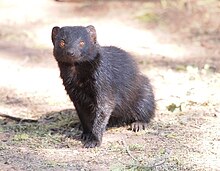
- List of herpestids, nominated by PresN
- Herpestidae is a family of mammals in the order Carnivora, composed of the mongooses and the meerkat. A member of this family is called a mongoose or a herpestid. They are widespread primarily throughout Africa and south Asia, and are found primarily in forests, savannas, shrublands, and grasslands, though some species can be found in wetlands or deserts. Most mongooses are 30–60 cm (12–24 in) long, plus a 20–40 cm (8–16 in) tail, though the Ethiopian dwarf mongoose can be as small as 18 cm (7 in) plus a 12 cm (5 in) tail, and the white-tailed mongoose can be up to 104 cm (41 in) plus a 47 cm (14 in) tail. Most species do not have population estimates, though one, the Liberian mongoose, is classified as vulnerable with a population size of around 5,000. No herpestid species have been domesticated.
- The 34 species of Herpestidae are split into 14 genera within 2 subfamilies: Herpestinae, comprising 23 extant species that are native to southern Europe, Africa and Asia, and Mungotinae, comprising 11 extant species native to Africa. Extinct species have also been placed into both subfamiles, though some older extinct species have not been categorized into a subfamily. Around ten extinct Herpestidae species have been discovered, though due to ongoing research and discoveries the exact number and categorization is not fixed. Herpestidae is believed to have diverged from the existing Feliformia suborder around 21.8 million years ago in the Early Miocene.
- List of international goals scored by Andriy Shevchenko, nominated by KingSkyLord
- Andriy Shevchenko is a Ukrainian former professional footballer who represented the Ukraine national football team as a striker for 17 years from 1995 to 2012. He is the Ukraine national team's all-time top goalscorer with 48 goals in 111 appearances, and the second most-capped Ukrainian international behind Anatoliy Tymoshchuk (144). He has represented the nation in two international tournaments, the 2006 FIFA World Cup and the 2012 UEFA European Championship, and participated in each of his country's qualifying campaigns during his international career.
- Louis Schwitzer Award, nominated by MWright96
- The Louis Schwitzer Award (also called the Louis H. Schwitzer Award for Engineering Innovation and Excellence) is presented by the Indiana Section of SAE International to an engineer or team of engineers "for their innovative design and engineering excellence" and acknowledges "engineers with the courage and conviction to explore and develop new concepts in racing technology" in racing vehicles for the Indianapolis 500. The accolade also distinguishes engineers who were most responsible for designing and developing the wnning concept complying to IndyCar Series technical regulations, and awards "functional and recent permutations" that improve energy efficiency, performance or safety in chassis, drive train profiles by "emphasizing competitive potential along with future automotive industry possibilities." Although the award specifically recognizes new concepts, experimental ideas arising from previous winners are considered if the development in engineering improves it.
- During the 53 years the award has been presented, there have been a total of 98 recipients. The inaugural winner was Andy Granatelli, who developed the gas-turbine run STP-Paxton Turbocar for the 1967 event. The award has been presented for two concepts in a single year just once: in 1977, to Bob Bubenik and Bruce Crower for developing the automatic clutch and flat-eight engine, respectively. Two years later, John Barnard and Jim Hill were the first team to be recognized for designing the Chaparal 2K chassis for that year's Indianapolis 500. Since then, another 24 teams have been recognized. Firestone tire engineer Cara Adams became the first female recipient in the 2019 edition. The award has been presented posthumously once, to Don Burgoon in the 2017 race. The 2020 winners were Tino Belli, Marco Bertolini, Ed Collings, Craig McCarthy, Antonio Montanari, Bill Pappas, Stefan Seidel and Brent Wright, who developed the IndyCar Aeroscreen cockpit protection device.
- List of accolades received by 1917 (2019 film) , nominated by Birdienest81
- 1917 is a 2019 epic war film co-written and directed by Sam Mendes. The film stars George MacKay, Dean-Charles Chapman, Mark Strong, Andrew Scott, Richard Madden, Claire Duburcq, Colin Firth, and Benedict Cumberbatch. Based in part on an account told to Mendes by his paternal grandfather, Alfred Mendes, it chronicles the story of two young British soldiers in the spring of 1917 during World War I, who are given a mission to deliver a message warning of an ambush, soon after the German retreat to the Hindenburg Line during Operation Alberich. Thomas Newman composed the film's musical score, while Roger Deakins was the cinematographer. Dennis Gassner and Lee Sandales were responsible for the production design, and Scott Millan, Oliver Tarney, Rachael Tate, Mark Taylor, and Stuart Wilson were responsible for the sound effects.
- The film garnered awards and nominations in a variety of categories with particular praise for its direction, cinematography, sound effects, score, and visual effects. It garnered ten nominations at the 92nd Academy Awards including Best Picture, Best Director for Mendes. The film went on to win three awards, including Best Cinematography (Deakins), Best Sound Mixing (Taylor and Wilson), and Best Visual Effects. At the 73rd British Academy Film Awards, 1917 received nine nominations and won seven awards including Best Film, Best Direction, BAFTA Award for Best Cinematography, and BAFTA Award for Best Production Design. The film received three nominations at the 77th Golden Globe Awards, winning two, including Best Motion Picture – Drama and Best Director.
- List of Most Played Juke Box Folk Records number ones of 1947, nominated by ChrisTheDude
- From 1944 until 1957, Billboard magazine published a chart that ranked the most-played country music songs in jukeboxes in the United States, based on a survey of over 3000 operators "in all sections of the country"; until 1948 it was the magazine's only country music chart. In 1947, nine songs topped the chart, which was published under the title Most Played Juke Box Folk Records with the exception of the issues of Billboard dated September 6 through November 1, when it was titled Most Played Juke Box Hillbilly Records. The Juke Box Folk chart is considered the start of the lineage of the magazine's current country music songs charts. The longest unbroken run at number one in 1947 was the fifteen consecutive weeks achieved by Tex Williams with "Smoke! Smoke! Smoke! (That Cigarette)", which was atop the chart from July until October. This was the first chart-topper for Williams in his own right, although he had been the uncredited vocalist on Western swing bandleader Spade Cooley's 1945 number one "Shame on You".
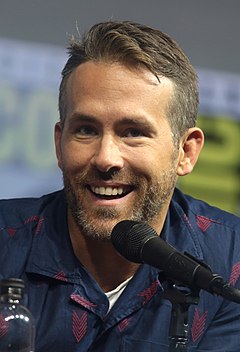
- Ryan Reynolds filmography, nominated by Cowlibob
- Ryan Reynolds is a Canadian actor who has appeared in films, television series, videos, and video games. Reynolds made his acting debut on television in the teen drama Fifteen in 1991. Two years later, he made his feature film debut by playing an orphan raised in India, who is inspired by Mahatma Gandhi to go on a hunger strike in a small town in Canada in Ordinary Magic (1993). Reynolds had a recurring role on the television show The Odyssey (1993). He followed this with minor appearances on The X-Files (1996), and the television film Sabrina the Teenage Witch (1996). His breakthrough role was as medical student Michael "Berg" Bergen in the sitcom Two Guys and a Girl. He played a slacker in National Lampoon's Van Wilder (2002), and vampire hunter Hannibal King in Blade: Trinity (2004) with Wesley Snipes. Reynolds appeared in lead roles in the commercially successful romantic comedies Just Friends (2005), Definitely, Maybe (2008), and The Proposal (2009). In 2010, he played a military contractor who is captured by terrorists in the psychological thriller Buried. The following year, Reynolds starred in the title role of the superhero film Green Lantern which received a generally negative reception from the critics and performed poorly at the box office leading to a decline in his career. Reynolds experienced a career turnaround when he played the titular antihero in the superhero film Deadpool (2016), which he also produced. It received generally positive reviews from the critics especially for his irreverent comedic performance, and Reynolds garnered a nomination for the Golden Globe Award for Best Actor – Motion Picture Musical or Comedy. The film was also a commercial success, grossing a worldwide total of over $782 million at the box-office. He reprised the role in its 2018 sequel Deadpool 2 which received generally positive reviews from critics, and was a commercial success. The following year, he voiced Pikachu in the film Detective Pikachu (2019).
- List of international goals scored by Ali Daei, nominated by Mojtaba2361
- Ali Daei is a former Iranian professional association football forward who holds the record of the all-time men's international top goalscorer, with 109 goals in 149 appearances between 1993 and 2006. His achievement is listed in Guinness World Records. On 28 November 2003, in an Asian Cup qualifier in Tehran against Lebanon, he scored his 85th international goal, elevating him past Hungarian footballer Ferenc Puskás to take the lead of the all-time list of scorers in international matches.
- He has scored eight international hat-tricks. On 10 June 1996, he scored his first international hat-tricks, in an 8–0 win over Nepal at Azadi Stadium in Tehran. On 17 November 2004, he scored the last one against Laos in a 2006 FIFA World Cup Qualification match, giving him 102 goals and making him the first male player to score 100 goals in international football.
- He scored 36 goals in FIFA World Cup qualification matches, 23 goals in AFC Asian Cup qualification games and 9 goals in Asian Games, as well as 14 goals in AFC Asian Cup Finals. The remainder of his goals, 27, were scored in friendly matches. He scored eight goals two opposition teams, the Maldives and Laos, his highest tally against any country. He scored 44 international goals at the Azadi Stadium, his most at a single ground.
- List of Burnley F.C. seasons, nominated by WA8MTWAYC
- Burnley Football Club, an English association football club based in Burnley, Lancashire, was founded on 18 May 1882 as Burnley Rovers. The suffix "Rovers" was soon dropped, and the club was simply known as "Burnley Football Club" at the time of its first match on 10 August 1882. For the first six years of its existence, there was no league football, so matches were arranged on an ad hoc basis, supplemented by cup competitions organised at local and national level. The club won its first trophy in 1883: the Dr Dean Cup, a knockout competition between amateur clubs in the local area. Burnley turned professional at the end of 1883, first entered the FA Cup in the 1885–86 season, and were one of the 12 founding members of the Football League in 1888. The team have played in the top four tiers of English football from 1888 to the present day.
- List of awards and nominations received by The West Wing, nominated by RunningTiger123
- The West Wing is an American political drama television series that aired on NBC from September 22, 1999, to May 14, 2006, broadcasting 156 episodes over seven seasons. Created by Aaron Sorkin and produced by John Wells Productions and Warner Bros. Television, the show follows the lives of White House staffers during the fictional Democratic presidential administration of Josiah Bartlet.
- Overall, the show won 99 awards from 285 nominations, including 27 Primetime Emmy Awards from 96 nominations. It was nominated for the Primetime Emmy Award for Outstanding Drama Series for all seven seasons it aired and won in each of its first four seasons; it is tied for the record for most wins in the category. By the end of its run, it was tied with Hill Street Blues for the most Emmys won by a drama series, a record later surpassed by Game of Thrones. The show also won nine Emmys for its first season, setting a record for most Emmys won by a series in one year that stood until Game of Thrones earned twelve Emmys in 2015. In addition, it won two Golden Globe Awards, two Directors Guild of America Awards, four Producers Guild of America Awards, six Screen Actors Guild Awards, and two Writers Guild of America Awards, among others. The series also received two Peabody Awards in 1999 and 2000.

- List of amphibians of Texas, nominated by HAL333
- Over sixty amphibian species are found in the American state of Texas, including forty-three species of frog and twenty-six species of salamander. Four species are categorized as endangered by the International Union for Conservation of Nature: the Barton Springs salamander, the Texas blind salamander, the black-spotted newt, and the Houston toad, which is also the state amphibian of Texas. Furthermore, Texas law protects several native amphibians, designating eleven species as threatened within the state and four others as endangered.
- The varying geography of Texas, the second largest state in the United States, provides a variety of habitats for amphibians, including swamps and the Piney Woods in the east, rocky hills and limestone karst in the central Hill Country of the Edwards Plateau, desert in the south and west, mountains in the far west (the Trans-Pecos), and grassland prairie in the north, also known as the Panhandle. This vast contrast in biomes makes Texas home to a wide variety of herpetofauna.
- List of Billboard number-one country songs of 1948, nominated by ChrisTheDude
- In 1948, Billboard magazine published two charts specifically covering the top-performing country music songs in the United States. At the start of the year, Billboard's sole ranking of country music recordings was based on the number of times a song had been played in jukeboxes. The Most Played Juke Box Folk Records chart had been published since 1944 and was compiled based on a weekly survey of "a selected group of juke box operators whose locations require folk records". In May, the magazine added a second country music chart, the Best Selling Folk Retail Records listing, based on a similar survey of "a selected group of retail stores, the majority of whose customers purchase folk records". The Juke Box Folk chart was discontinued in 1957 and the Best Sellers chart the following year; both are considered part of the lineage of the magazine's current country music songs charts.
- List of plant genus names (D–K), nominated by Dank
- Since the first printing of Carl Linnaeus's Species Plantarum in 1753, related plant species have been grouped according to genus (plural genera). These genera have been catalogued in a variety of works, including Stearn's Dictionary of Plant Names for Gardeners. William Stearn (1911–2001) was one of the pre-eminent British botanists of the 20th century: a Librarian of the Royal Horticultural Society, a president of the Linnean Society and the original drafter of the International Code of Nomenclature for Cultivated Plants.





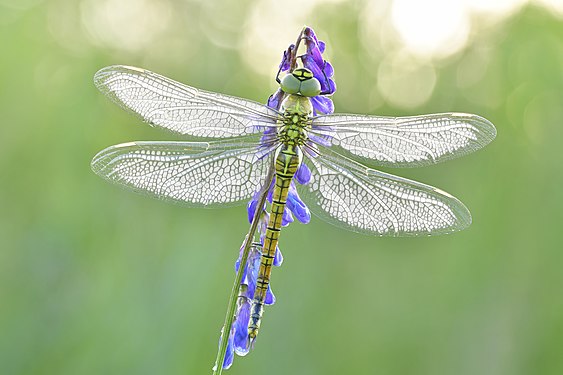


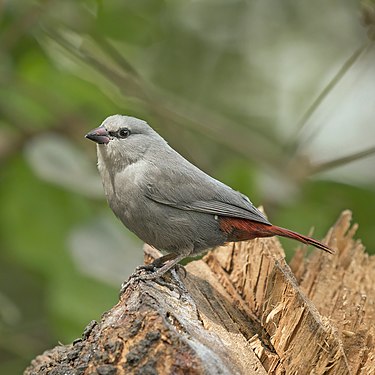

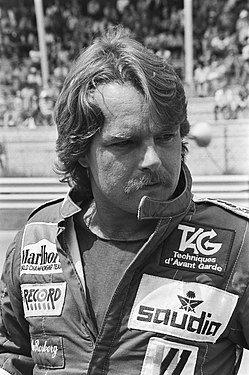



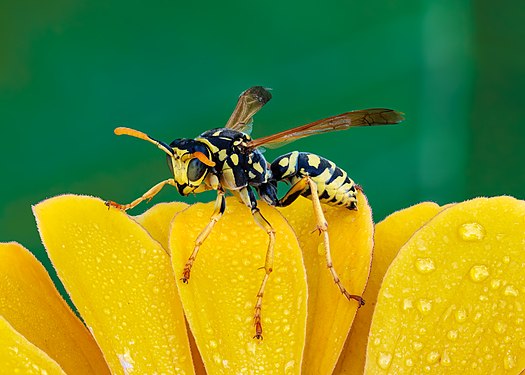
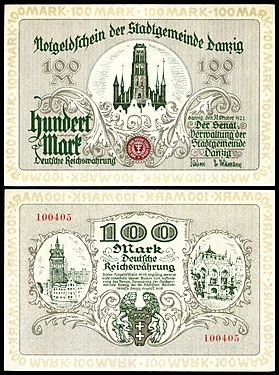
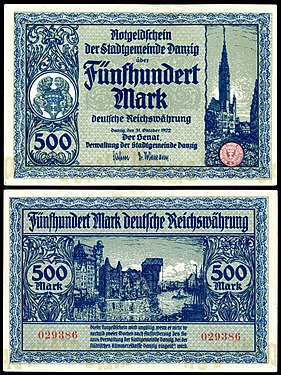



Discuss this story
The image text for the first picture (directly under the header) currently states . While I'm not certain what it is mind to say I'm guessing something is missing here Merry Christmas! Asartea Talk Contribs! 07:36, 28 December 2020 (UTC)[reply]